Potřebujeme váš souhlas k využití jednotlivých dat, aby se vám mimo jiné mohly ukazovat informace týkající se vašich zájmů. Souhlas udělíte kliknutím na tlačítko „OK“.
ASTM E2479-11
Standard Practice for Measuring the Ultrasonic Velocity in Polyethylene Tank Walls Using Lateral Longitudinal (LCR) Waves
Automaticky přeložený název:
Standardní praktiky pro měření rychlosti ultrazvuku v polyetylenových stěny nádrže pomocí Boční Podélné (LCR) Waves
NORMA vydána dne 1.7.2011
Informace o normě:
Označení normy: ASTM E2479-11
Poznámka: NEPLATNÁ
Datum vydání normy: 1.7.2011
Kód zboží: NS-45396
Počet stran: 7
Přibližná hmotnost: 21 g (0.05 liber)
Země: Americká technická norma
Kategorie: Technické normy ASTM
Kategorie - podobné normy:
Anotace textu normy ASTM E2479-11 :
Keywords:
Longitudinal waves, Polyethylene (PE) tank walls, Ultrasonic velocity, ICS Number Code 23.020.10 (Stationary containers and tanks), 83.080.01 (Plastics in general)
Doplňující informace
| Significance and Use | ||||||||||||||||
|
Measuring the velocity of ultrasound in materials is a unique method for determining nondestructively the physical properties, which can vary due to both manufacturing processes and environmental attack. Velocity is directly related to the elastic moduli, which can vary based on environmental exposure and manufacturing process, The LCR method described herein is able to measure the velocity between two adjacent points on a surface and therefore is independent of the conditions on the opposite wall. Applications of the method beyond polymer tanks will undoubtedly be developed and examination may occur in the production line as well as in the in-service mode. |
||||||||||||||||
| 1. Scope | ||||||||||||||||
|
1.1 This practice covers a procedure for measuring the ultrasonic velocities in the outer wall of polyethylene storage tanks. An angle beam lateral longitudinal (LCR) wave is excited with wedges along a circumferential chord of the tank wall. A digital ultrasonic flaw detector is used with sending-receiving search units in through transmission mode. The observed velocity is temperature corrected and compared to the expected velocity for a new, unexposed sample of material which is the same as the material being evaluated. The difference between the observed and temperature corrected velocities determines the degree of UV exposure of the tank. 1.2 The practice is intended for application to the outer surfaces of the wall of polyethylene tanks. Degradation typically occurs in an outer layer approximately 3.2-mm (0.125-in.) thick. Since the technique does not interrogate the inside wall of the tank, wall thickness is not a consideration other than to be aware of possible guided (Lamb) wave effects or reflections off of the inner tank wall. No special surface preparation is necessary beyond wiping the area with a clean rag. Inside wall properties are not important since the longitudinal wave does not strike this surface. The excitation of Lamb waves must be avoided by choosing an excitation frequency such that the ratio of wavelength to wall thickness is one fifth or less. 1.3 UV degradation on the outer surface causes a stiffening of the material and an increase in Young's modulus and the longitudinal wave velocity. 1.4 The values stated in SI units are to be regarded as standard. The values given in parentheses are mathematical conversions to inch-pound units that are provided for information only and are not considered standard. 1.5 This standard does not purport to address all of the safety concerns, if any, associated with its use. It is the responsibility of the user of this standard to establish appropriate safety and health practices and determine the applicability of regulatory limitations prior to use. |
||||||||||||||||
| 2. Referenced Documents | ||||||||||||||||
|
Podobné normy:
Historická
1.1.2014
Historická
1.10.2013
Historická
1.4.2010
Historická
1.1.2010
Historická
1.4.2013
Historická
1.7.2011
Doporučujeme:
Aktualizace technických norem
Chcete mít jistotu, že používáte pouze platné technické normy?
Nabízíme Vám řešení, které Vám zajistí měsíční přehled o aktuálnosti norem, které používáte.
Chcete vědět více informací? Podívejte se na tuto stránku.


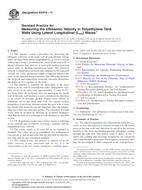
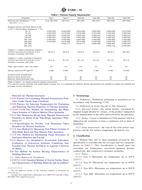 ASTM C1393-14
ASTM C1393-14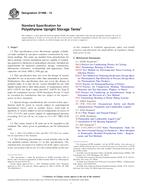 ASTM D1998-13
ASTM D1998-13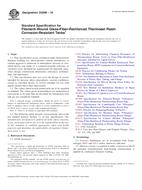 ASTM D3299-10
ASTM D3299-10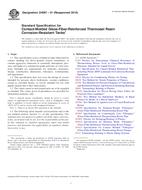 ASTM D4097-01(2010)..
ASTM D4097-01(2010)..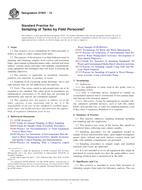 ASTM D7831-13
ASTM D7831-13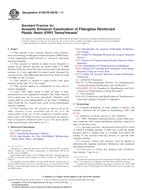 ASTM E1067/E1067M-11..
ASTM E1067/E1067M-11..
 Cookies
Cookies
